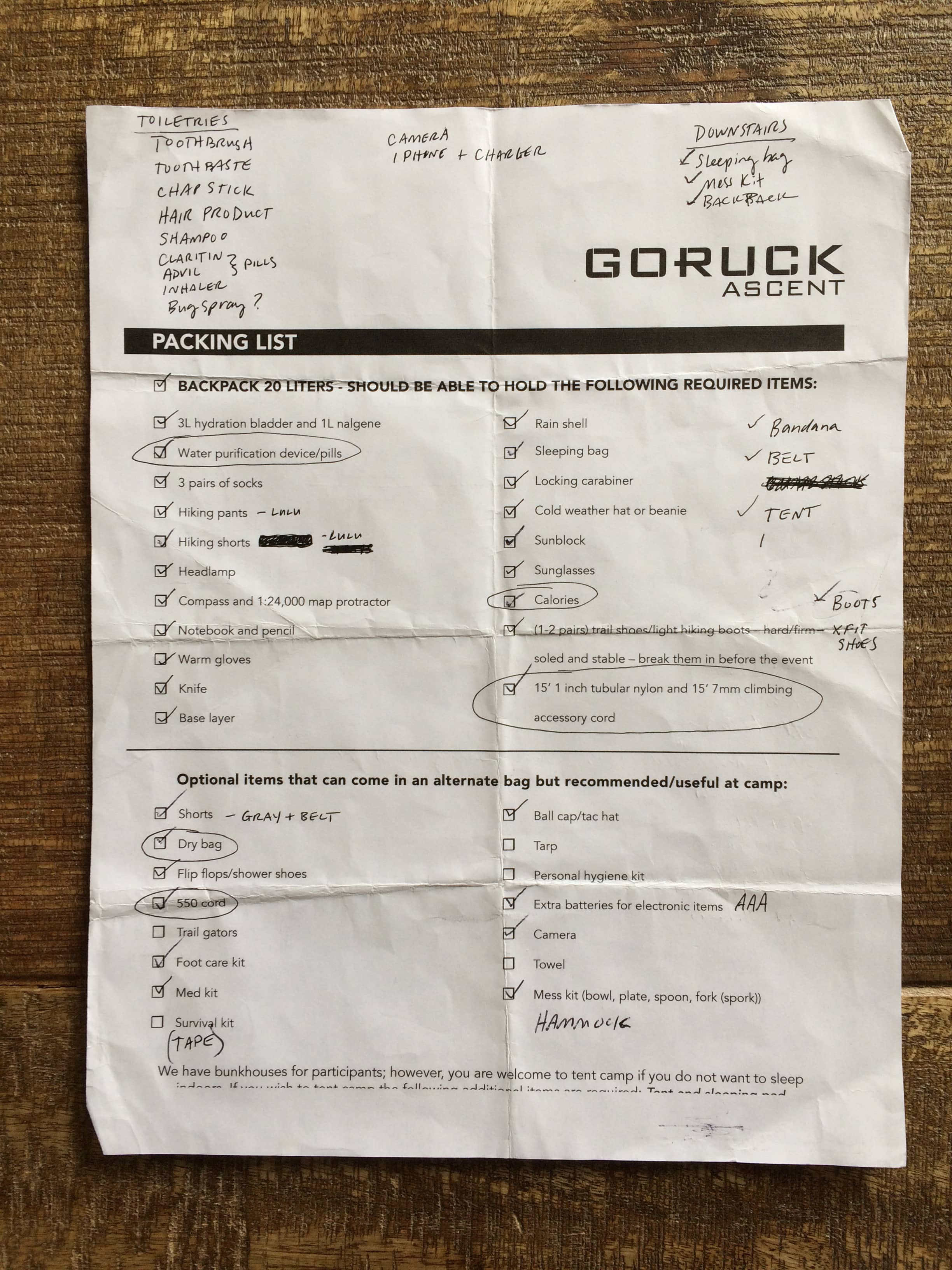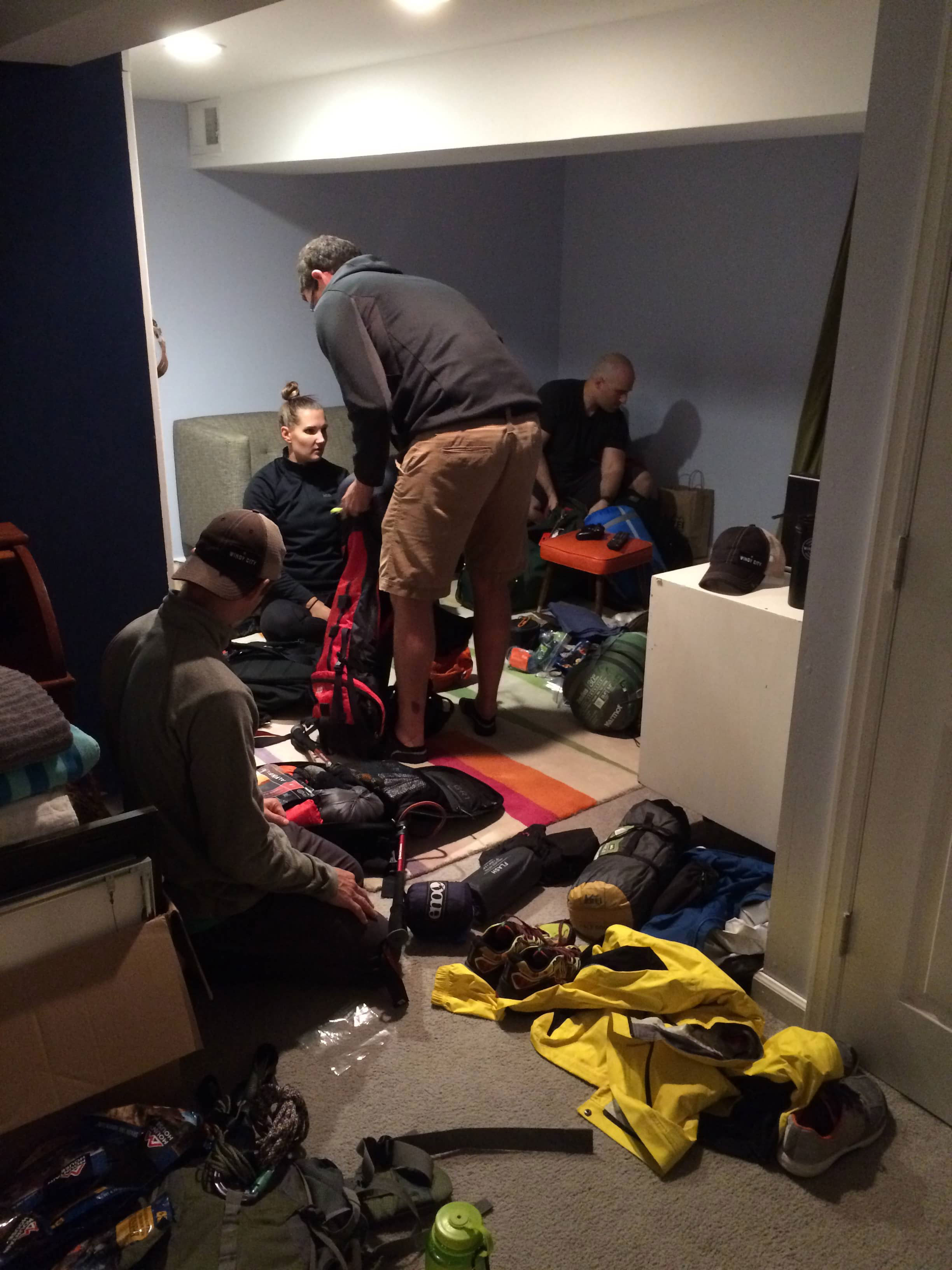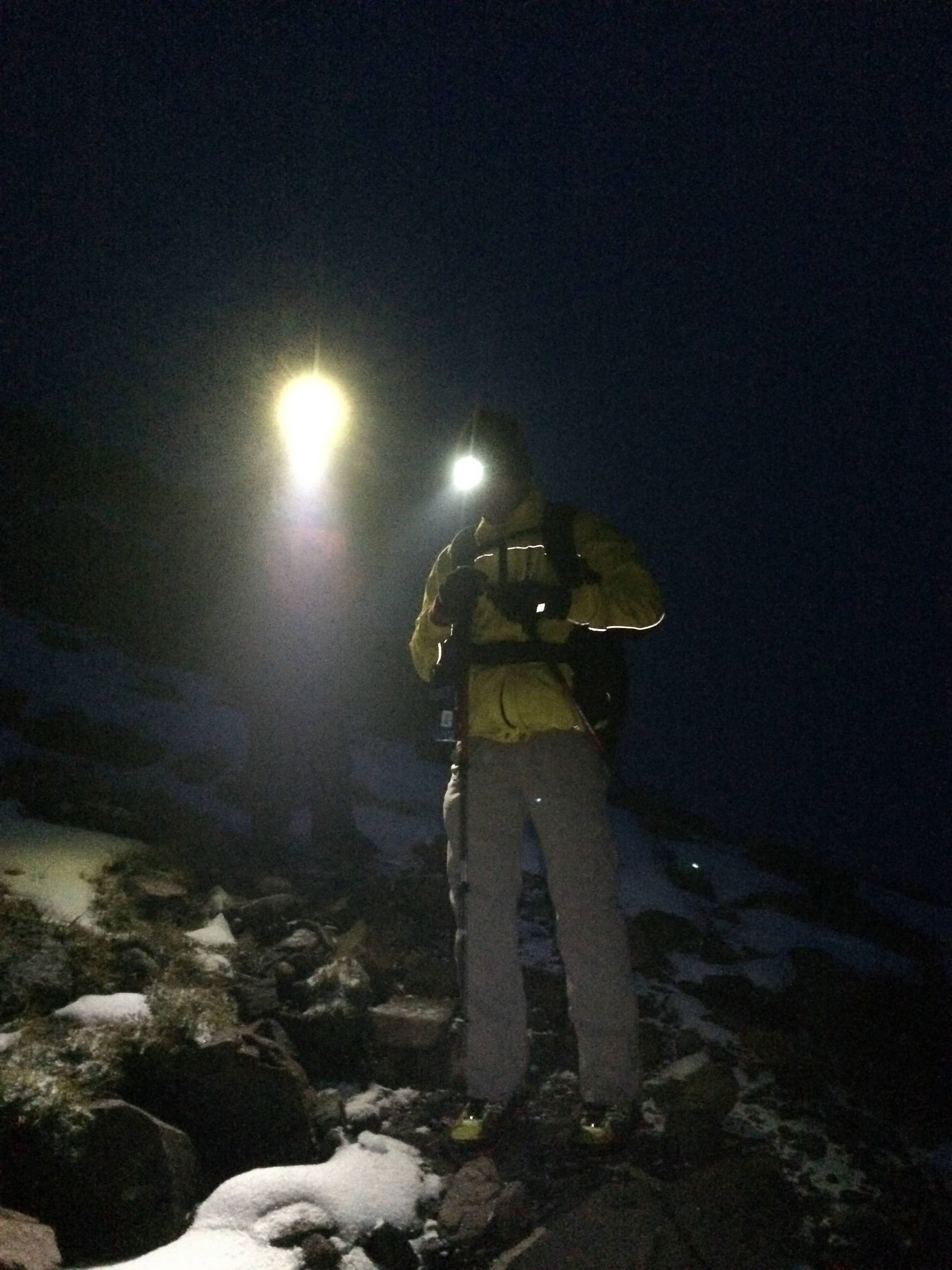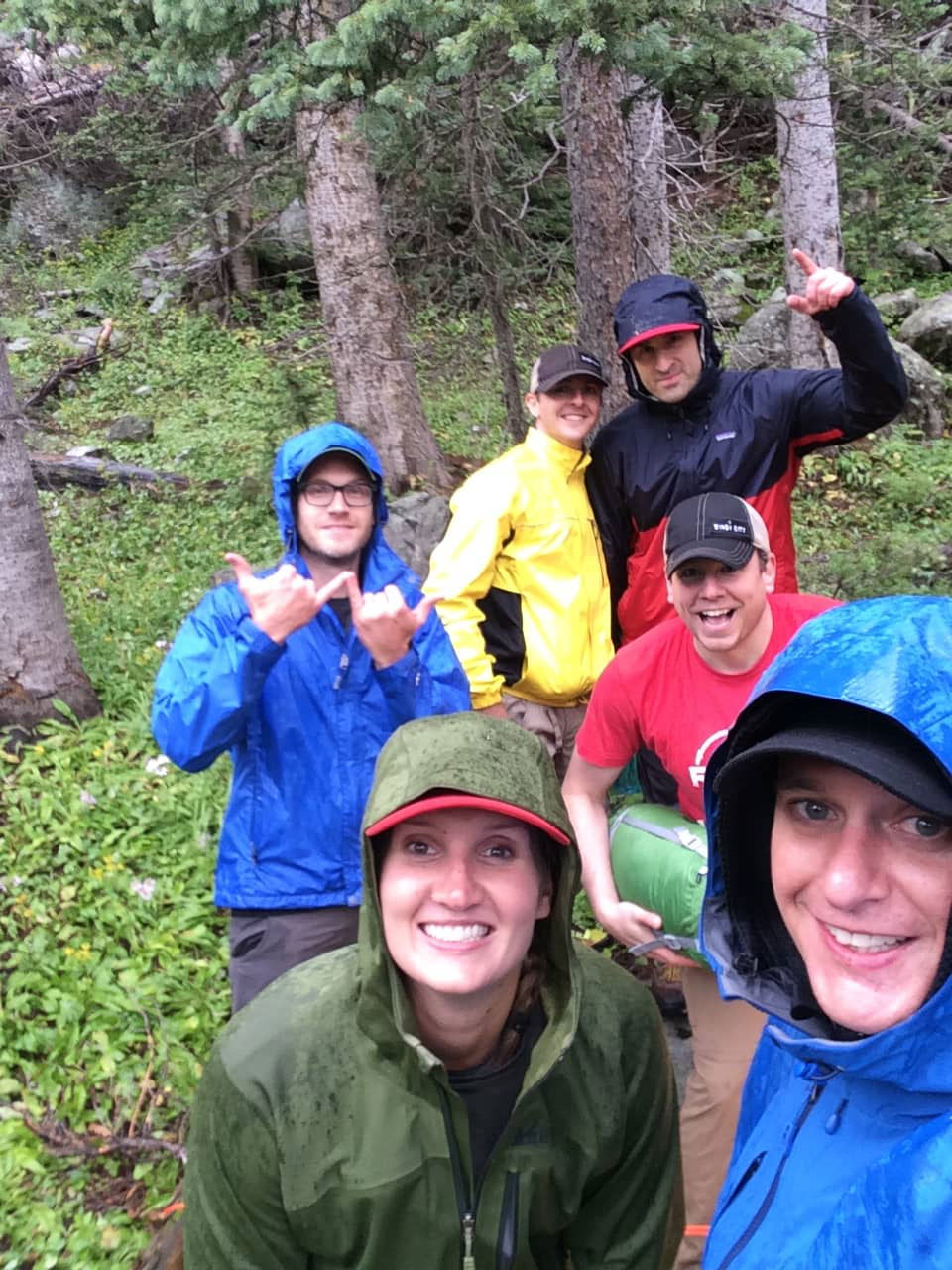GORUCK ASCENT
Mountain Navigation and Survival Training in Colorado
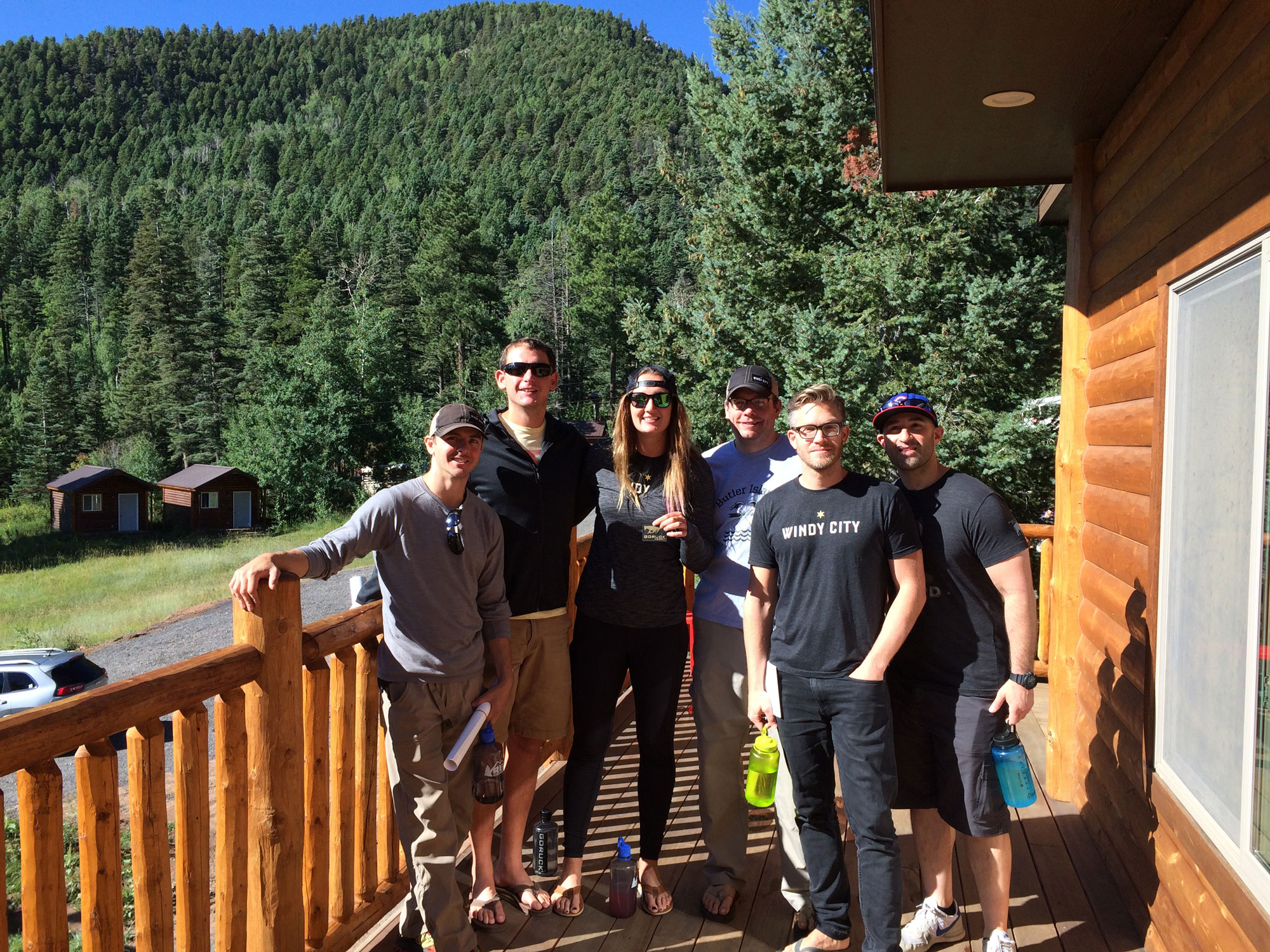
The Crew: Justin, Dave, Ingrid, Ed-venture, Kyle, Tony
GORUCK is known for their military-style team-building and endurance events. Ascent was more of a mountainous navigation adventure with survival classes taught by current and former Special Forces soldiers and wilderness experts—a perfect adventure for the Windy City Ruck Club to tackle. Join Windy City members Ed-venture, Tony, Ingrid, Dave, Kyle and Justin as they share their experience.
“If happiness is your goal—and it should be—then adventure should be top priority.” – Richard Branson
What made you decide to do Ascent and what did you experience?
We were really looking forward to using our training to get out in the mountains and learn some survival skills with a good group of people. We really had no idea what we were getting ourselves into—we were given a packing list and a promise to walk away with some new wilderness skills. Honestly, the packing list had us all baffled. How does one fit so many items into a 20L backpack? We live in Chicago and for many of us this was our first time in a tent. So we over-packed and decided to share some items and hope for the best.
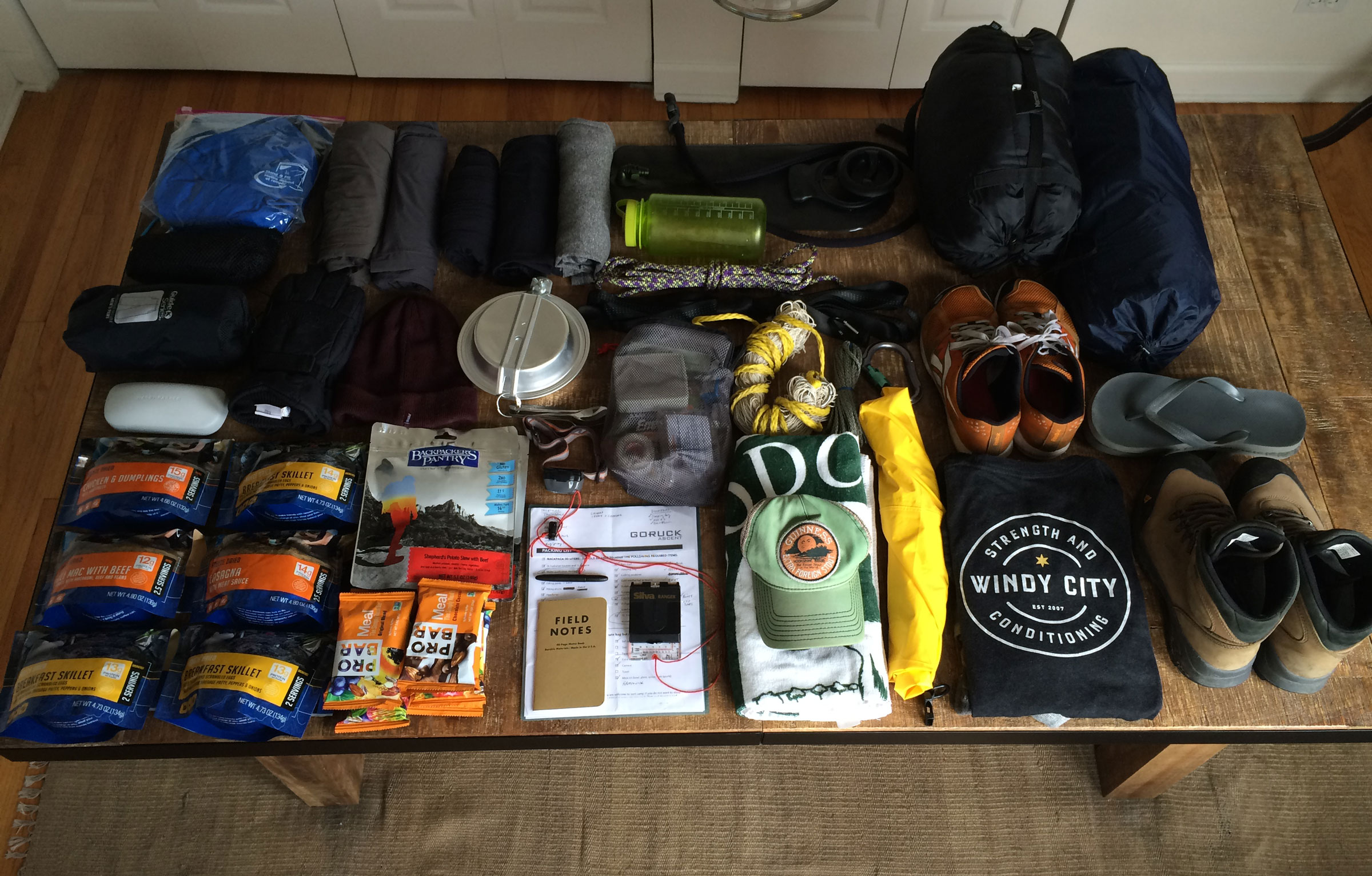
“What really drew me to Ascent was the promise of learning some outdoor survival skills. I’ve always wanted to have these skills, but was never a Boy Scout, never spent a ton of time in the outdoors, camping, etc. Also, just being with the group (Ruck Club). We’ve got a great crew, and I was excited to experience this trip with all of them."
Day 1: We flew into Denver the day before the event with enough time to make a few last-minute trips to REI to get supplies. Justin had already moved to Denver, so we stayed the night at his place, had a nice steak dinner, chatted about what to expect and packed and repacked our rucks.
Day 2: We hit the road early the next morning and drove to the YMCA Camp Jackson near Rye, Colorado, where we met up with about 30 other people. We left some of our gear behind (or lent it to others) and drove to the Sangre De Cristo Wilderness, where we were going to attempt to summit Humboldt Peak (14,064 feet) the next morning.
Along the way, we stopped at the famous Bishop Castle, a monumental three-story castle hand made of stone and iron with soaring towers and bridges with gorgeous vistas, and a fire-breathing dragon at the top. This place was quirky and totally worth the stop.
We parked the cars near the entrance of the Sangre De Cristo Wilderness and hiked about 2 miles before it started raining and getting dark. We were told to spread out at least 100 yards, step off the trail and set up camp in the woods where we weren’t visible from the trail. Both sides of the trail were steep, but we found small patches of semi-flat land to pitch our tents and eat a freeze-dried MRE on a jet boil. We had two tents with six people, so it got real cozy that night (and smelly, thanks to the chili mac)!
Day 3: Our wake up call at 2am came quickly. Some of us didn’t sleep at all. We hit the trailhead with headlamps, trekking poles, warm clothes, water and food. Our goal was to get to the top of Humboldt Peak and back down before 10am when the weather was expected to come in. We learned that the temperature gets about 5º colder every 1,000 feet. It was about 60º at 9,000 feet where our tents were, so we expected 35º at the top.
Thankfully, no one got altitude sickness, but breathing was strenuous. It typically takes about 3 weeks for your body to adjust to lack of oxygen, and we only had about 3 days to acclimate. Our hike was slow and steady in the pitch black with only headlamps to guide our path. As we neared the top, we had to stop every 20 paces to catch our breath.
The big group naturally split up into smaller groups based on speed and ability. Our group stuck together until we hit about 13,500 feet when we reached the ridgeback of the mountain. The wind picked up and the trail turned into a rocky wall of ice and snow. We learned later that the weather conditions were abnormal that day.
“Our path was no longer visible and we were virtually alone since the lead pack was so far ahead and others fell so far behind. At one point, we had to make a difficult decision whether to turn back or keep going.”
The temperature dropped to 25º near the top. Our path was no longer visible and we were virtually alone since the lead pack was so far ahead and others fell so far behind. At one point, we had to make a difficult decision whether to turn back or keep going. We stood on the side of a blustery mountain for 15 minutes trying to decide what to do, but the weather ended up winning that day. Four of us turned back and the other two continued to reach the summit.

“For us, turning back was not a failure. It was about being good teammates, staying together and supporting each other. It was a mental win for us to recognize it was not about pushing through the cold, pain and discomfort.”
We each had trained to reach the top of a 14er. In the gym, we were accustomed to pushing ourselves outside of our comfort zones—when our bodies want to quit, our mind forces us to push through it. This was different. We had to be mentally aware of everything our bodies were telling us. For us, turning back was not a failure. It was about being good teammates, staying together and supporting each other. It was a mental win for us to recognize it was not about pushing through the cold, pain and discomfort.
It was about 7am when we turned back. Once we got below the clouds, the sun was trying to come out and we could finally see the spectacular view that we couldn’t see in the dark on the way up.
We got back down to the trailhead by 9am and we were ready for food and a nap! We broke down our camp and drove back to the YMCA. In total, we hiked over 16 miles round trip.
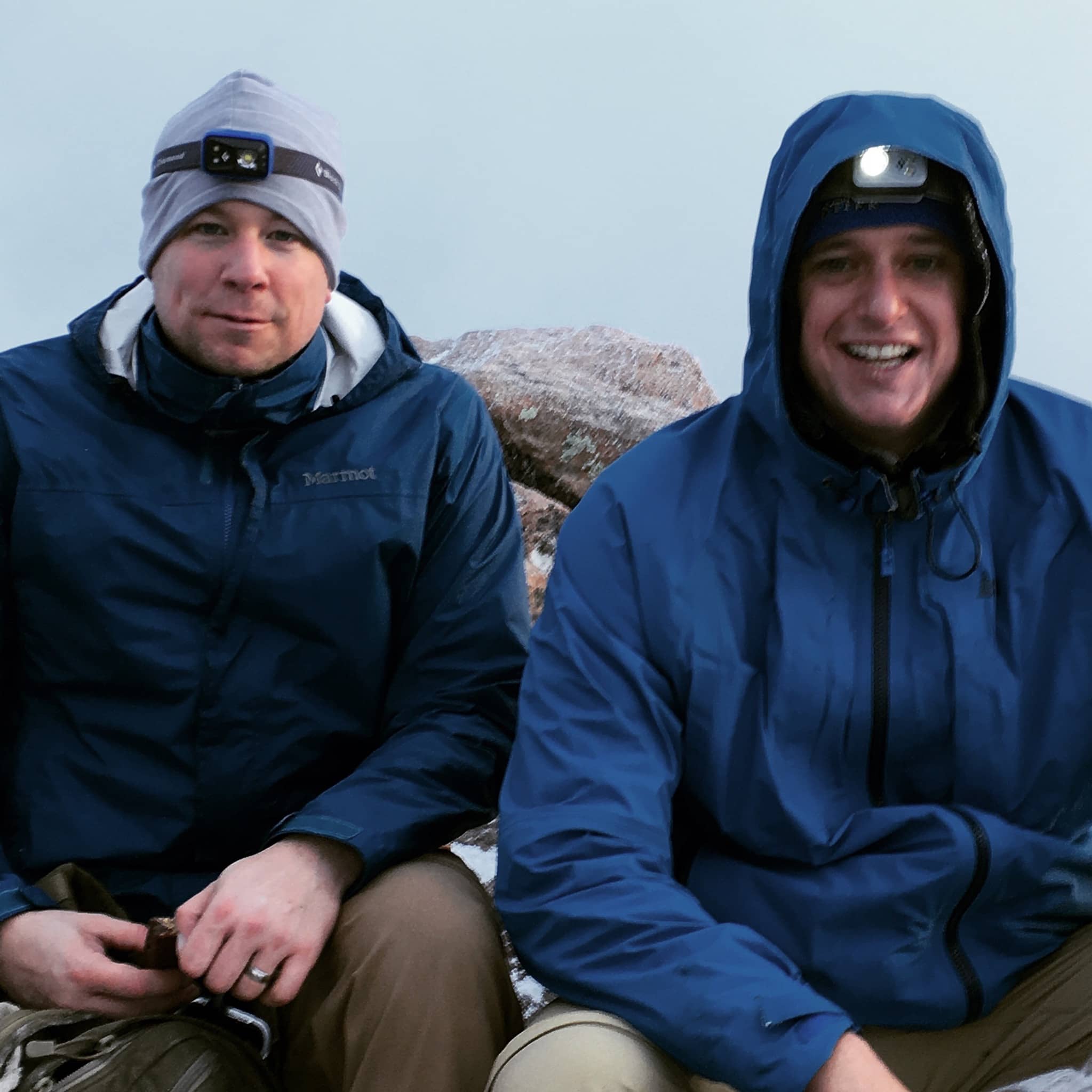
Ed-venture and Dave on top of Humboldt Peak
Day 4: Back at the YMCA, we spent the next two days learning about how to properly pack a bag, reading weather in the mountains, fire starting, fishing with spears, filtering water with t-shirts and sand, how to make a survival kit, rock climbing and how to use a rope bridge.
The last night, the Cadre grilled up some fantastic steaks and potatoes, and we washed it all down with about 20 cases of Coors. Each of us earned a topographical map of the mountain and a patch. It was truly a celebration worth remembering, and one we will never forget!
What was your favorite memory?
Kyle: You have to know Ed a little to appreciate this story. Ed is a city guy. He likes good food, nice restaurants and Old Fashioneds. Ascent was his first experience in nature, first time mountain climbing, first time in a tent, the whole nine yards. We were so impressed when he and Dave made it to the top of the mountain, but it was questionable whether or not he was actually enjoying himself in nature. On the last night, we were all celebrating. Ed was standing near the bonfire, hands in pockets, staring deep into its flames. I said, “How ya doin’ Ed? Look at those stars. You won’t see that in Chicago.” Ed looked up, paused, and said, “I’m ok with that.” Ed earned his nickname “Ed-venture” on this trip by doing something totally new and unfamiliar, and now he can’t wait for the next adventure.
Justin: One of my favorite memories was dinner together on my back deck the night before we left for the event. Everyone had just gotten in that day, we were getting reacquainted, it was a beautiful night. Rhoda was on fire, we grilled, ate dinner, had great conversation, then spent the rest of the night packing and re-packing our rucks. Solid bonding.
Another favorite memory was after we had hiked into the wilderness about 2 miles, the night before the actual summit attempt. Just setting up camp, sitting / standing around with each other eating our MREs, chatting…all of us full of anticipation for what was about to come.

How did you train for Ascent?
As you can imagine, Chicago is not the most mountainous terrain in the world, so Justin had to get creative with the programming. The Ruck Club trains together almost daily. There were no oxygen chambers to prepare for the altitude, just a lot of miles with weighted rucks in addition to specified strength and conditioning training. Here’s an example of one week:
Monday:
A.
5 sets:
minute 1 - 10 bench press
minute 2 - 10/arm db bent over row
+
2-3 minutes - rest / hydrate
+
B.
10 minutes:
max weighted ruck step-up, 20" (25lb)
+
2-3 minutes - rest / hydrate
+
C.
10 minutes - steady pace:
5 hang power clean
5 dip
+
2-3 minutes - rest / hydrate
+
D.
5 sets:
minute 1 - 20 russian swing
minute 2 - 10 goblet squat
+
E.
8 sets:
5 pillar sprint
rest / jog back to start
+
90 sec - rest / hydrate
+
8 sets:
5 pillar sprint
rest / jog back to start
Tuesday:
A.
30 minutes - ruck out (35lb) -- get as far as you can, no running
1 minute - rest (if needed)
30 minutes - ruck in (35lb) -- try to make all the way back
*this is not just a 60 minute ruck -- track distance on way out and try to make it all the way back in
*heavier this week w/35lb
Thursday:
A.
3 sets:
20 sec - power clean
40 sec - rest
20 sec - db bench press
40 sec - rest
20 sec - pull-up
40 sec - rest
+
2 minutes - rest / hydrate
+
B.
3 sets:
20 sec - russian swing
40 sec - rest
20 sec - chin-up
40 sec - rest
20 sec - jump rope (double-under or single)
40 sec - rest
+
2 minutes - rest / hydrate
+
C.
3 sets:
20 sec - dip
40 sec - rest
20 sec - ring row
40 sec - rest
20 sec - face pull
40 sec - rest
+
D.
8 sets:
5 pillar sprint
rest / jog back to start
+
90 sec - rest / hydrate
+
8 sets:
5 pillar sprint
rest / jog back to start
Friday:
A.
10 sets:
3 deadlift + 3 hang power clean + 3 front squat
rest 45-60 sec
+
B.
8 sets:
5 pillar sprint
rest / walk back
+
3 minutes - rest / hydrate
+
8 sets:
5 pillar sprint
rest / walk back
+
C.
4-8 sets - every 30 sec:
there / back sprint
+
D.
3 sets:
30 1/4 squat jump
rest 60 sec
Saturday:
Saturday Ruck
5 miles w/25lb

What advice would you give someone else who wants to do Ascent?
This advice is specific to our experience. We get the sense that each GORUCK event is slightly different, so your event may be quite different than ours.
- We were not able to fit everything on the packing list into a 20L bag. The 20L bag was perfect for doing the overnight camp/climb. We also brought a large pack and left behind some items at our basecamp, in our car, in our tent or a bear bag. On the climb, we carried only water, snacks, warm layers and med kit to keep our weight as light as possible. We did not carry everything with us at all times.
- It’s cold up there. It might have been 70º in Denver, but it was about 25º on the top of the mountain that day. Bring warm layers, stocking hat, gloves, a light down coat, rain shell and hiking boots that are stable and water resistant. Staying dry is the key to staying warm, so shed layers to regulate your temperature. You want to avoid sweating, because sweat will freeze.
- Drink a lot of water. More than you think you need. This not only keeps you hydrated, but it helps your body adjust to the oxygen levels and avoid altitude sickness. We spent a lot of time talking about altitude sickness. It’s real, it’s dangerous, and it doesn’t matter how fit you are. If you experience altitude sickness, the only treatment is to get down as quickly and carefully as possible.
- Expect an element of surprise. The organizers were organized, but withheld certain information to keep us on our toes. We’re still not sure if this was intentional or not.
- Our last piece of advice: Just go for it. Just fucking do it. You won’t regret it. Get outside and use your fitness. You may realize that it’s not your thing…but you absolutely will not regret it. Life is about experiences. That’s how you learn.
- Find a crew. Find a group of individuals that you like to train with; that you like to learn with; that you like to adventure with; that you can have FUN with. The crew that went on this trip was such a solid fit. Good times with great people!
